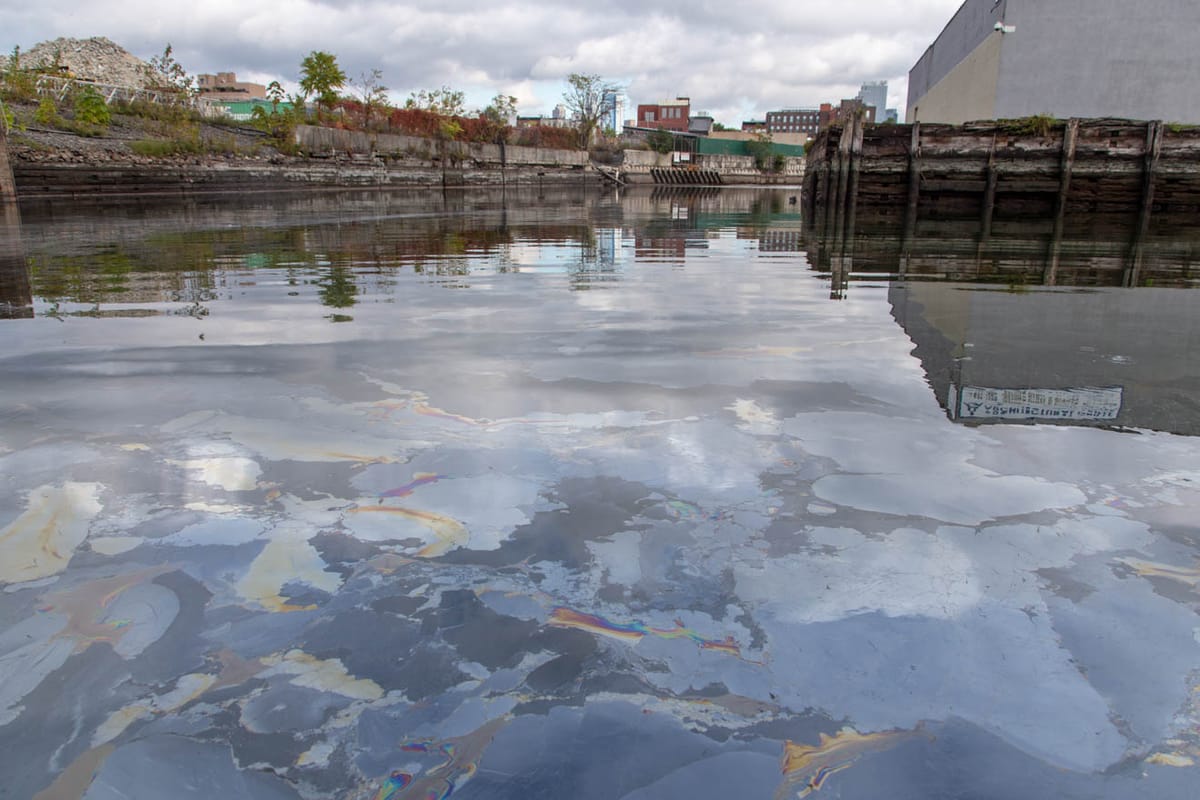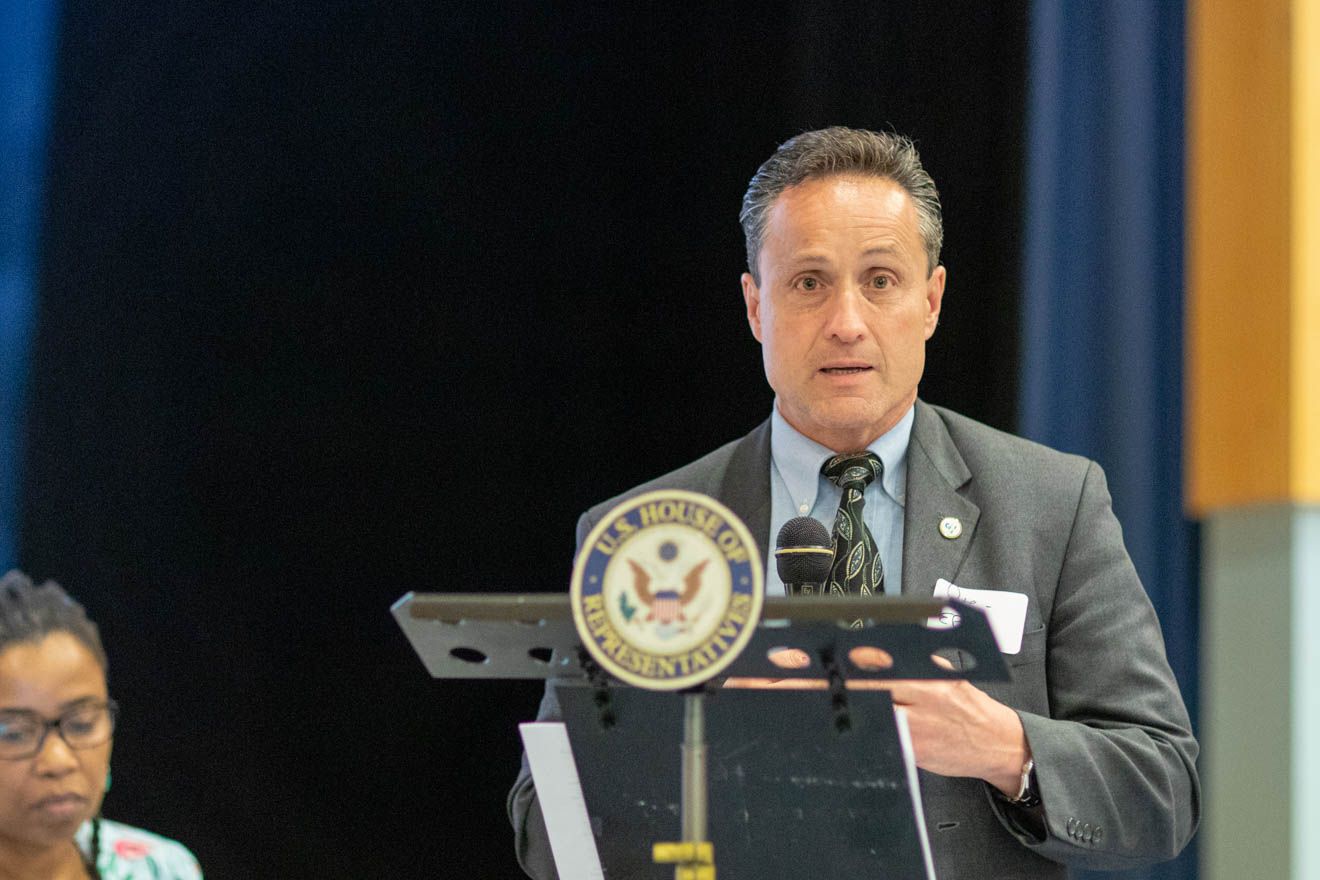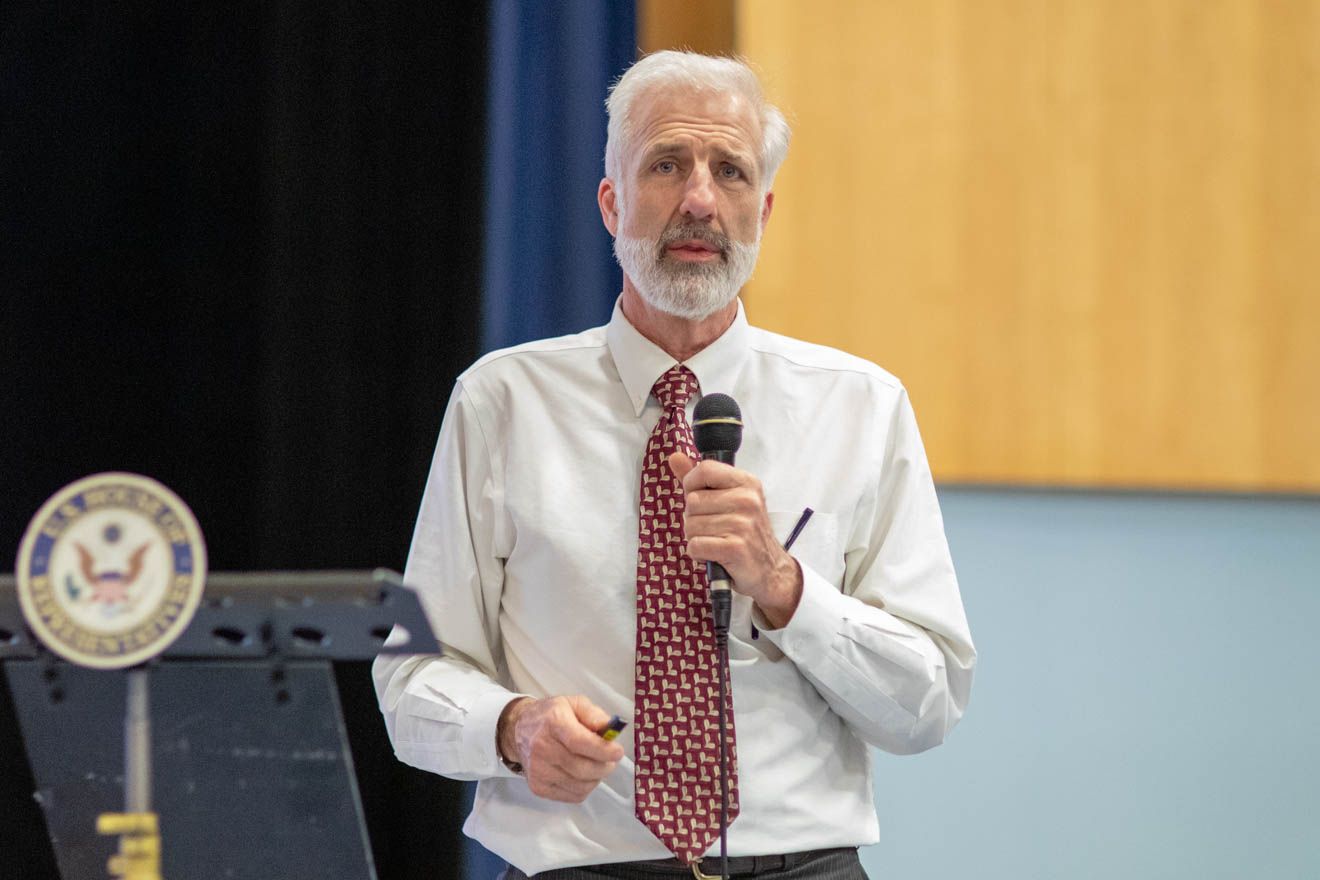EPA Outlines Next Steps In Gowanus Superfund Cleanup

GOWANUS – Residents of Gowanus and surrounding neighborhoods braved the rain Wednesday evening to attend the Gowanus Superfund Town Hall at P.S. 133.

The Gowanus Canal Community Advisor Group (CAG) hosted the event to provide locals with an update on the project and offer them an opportunity to ask questions. The CAG, comprised of more than 50 members from various local organizations, serves as a forum where the public can communicate with the EPA about the Superfund cleanup.
As she did at the first Superfund Town Hall held in November 2017, Congress Member Nydia Velázquez gave a keynote address at the start of the meeting. Velázquez played a key role in having the Gowanus Canal designated a Superfund site in 2010.

“Every step of the way throughout this process my top priority has been community involvement,” the Congress Member said, noting that the cleanup should respond to the needs of the community and not be “driven by vested interests.”
“It is vital that we remediate this local environmental sore spot to keep contaminants away from our local communities and public at large,” she added. “While there is still a long way to go, we have made important strides in recent years,” she said, referring to the recent completion of the pilot dredging and capping program. “Last fall, a year-long dredging and capping pilot program in the 4th Street Basin was completed, meaning that portion of the canal is the cleanest it’s been in more than 100 years,” she said.
As the project moves forward and the Gowanus rezoning looms, Velázquez continued, “For me it is important that any development along the canal, including new building construction, does not compromise the remediation process. It is important that any EIS (Environmental Impact Study) needs to take into account the population that will be coming in.”
The Congress Member’s statement echoes the comments that EPA Project Manager Christos Tsiamis submitted to the NYC Department of City Planning (DCP) regarding the Draft Scope of Work as DCP prepares the DEIS (Draft Environmental Impact Study) for the Gowanus rezoning. “In anticipation of potential redevelopment, the ROD [EPA’s Record of Decision] requires that any future activities which fall under the City’s purview, including development, do not compromise the effectiveness of the Gowanus Canal remedy,” Tsiamis insists. “Among other things, the ROD specifically states that ‘redevelopment projects will need to take mitigation measures to prevent or offset additional sewer loadings’ to the Canal to protect the remedy.”
“EPA intends to work cooperatively with the City to ensure that the rezoning process is conducted in a manner that is, with respect to the Canal, protective of human health and the environment,” his letter concludes.

This sentiment—that the Gowanus rezoning not compromise the Superfund remedy—was repeated many times by EPA representatives during the Town Hall in response to community members concerned that the rezoning process will proceed before the canal has been cleaned.
“We have one shot at getting this right—one shot—and in this process, everyone has a role, from the community, to the city, to the state, and the federal government,” Velázquez stated.

Natalie Loney, EPA Community Involvement Coordinator for Region 2, gave a brief presentation on the history of the Gowanus Canal and how it became contaminated. Click here for our coverage of the November 2017 Superfund Town Hall where Loney gave a similar presentation.
Following Loney’s presentation, Walter Mugdan, EPA Deputy Regional Administrator for Region 2, explained the next steps in the cleanup.

EPA issued a Record of Decision (ROD) in 2013 detailing the agency’s plan for the cleanup of the Gowanus Canal. The ROD includes:
- removal of soft sediments or “black mayonnaise” at the bottom of the canal
- transporting the sediment to an offsite facility
- capping the contaminated native sediment that remains at the bottom of the canal
- in-situ stabilization (mixing concrete with contaminated soil in some areas of the canal to create a solid layer and prevent additional migration of contaminants)
- coordinating with the cleanup of the three former Manufactured Gas Plant (MGP) sites along the canal (Fulton Manufacturing Gas Plant, Citizens Gas Works, Metropolitan Gas Light Company)
- design and construction of two CSO tanks
- excavating and restoring the 1st Street Turning Basin
“The next thing that you will see is a 50- to 60-foot-deep cutoff wall, made out of steel pilings, will be driven down into the ground,” Mugdan explained. Tsiamis also informed the Gowanus CAG about the wall on Tuesday during the group’s monthly meeting. The cut-off wall will be installed in front of the Fulton MGP site, on the eastern side of the waterway, from the top of the canal down to Union Street. Construction of the cutoff wall is expected to begin in June.

“Thomas Greene Park, specifically right by where the pool and the handball courts are, that was ground zero of the Fulton Manufacturing Gas Plant site where a huge amount of coal tar went into the ground,” Mugdan explained at the Town Hall. “That coal tar moves through the ground towards the canal…so the cutoff wall is intended to cut off the migration of coal tar from the land into the canal. We want to make sure the canal, once it is dug out and cleaned, stays clean.”
The existing bulkheads along the 1.8 mile length of the canal will be replaced, Mugdan added. As the cleanup team learned from the pilot dredging project, vibrations from machinery installing the bulkheads caused the walkway behind Whole Foods to buckle. Crews will now use a hydraulic machine to press the steel pilings into the ground in order to prevent damage to surrounding land and structures.

“In many instances the installation is being done by the adjacent property owners under an administrative order with the EPA,” Mugdan answered when an audience member questioned who will be responsible for the bulkheads. “We specify exactly what the engineering specs should be for the bulkheads…the work being done by the adjacent property owners is being paid for by the adjacent property owners under our supervision.” In some cases, Mugdan noted, as a lead Potentially Responsible Party (PRP), National Grid will install and pay for the walls (e.g., the cutoff wall at the head of the canal).
Also scheduled for June, the members of the EPA Gowanus cleanup team will meet with Pete Lopez, EPA Regional Administrator, Region 2, to discuss the tunnel plan proposed by DEP in lieu of the two CSO tanks. The team is currently evaluating the information about the tunnel, as well as tank designs, provided by the NYC Department of Environmental Protection (DEP).
“That would be a significant change from the project that we have identified in the Record of Decision,” Mugdan noted. “We have to balance a lot of considerations as to whether this is going to be an overall beneficial or a more troubling proposal,” he added.
Mugdan also noted that National Grid is responsible for the cleanup of Thomas Greene Park, where the coal tar goes down as deep as 25 feet into the ground. “We’re not going to have National Grid start that work until an alternative location for a temporary pool has been identified and a temporary pool has been constructed,” he noted. “So there will not be any time when the community is without a pool within the immediate area.” The temporary pool will remain open until the cleanup work is completed, he said.
Dredging in the main channel is expected to begin in 12 to 18 months. “We are hoping to get it started still in 2020, that may be out of our reach. It may have to be 2021,” Mugdan said. While dredging will be done in three stages (head of the canal, mid-canal, lower canal) it will likely take six to seven years.
National Grid is the lead potentially responsible party, among 35 to 40 other PRPs, Mugdan said. “They are working together, they are together funding it, but National Grid is taking the lead.” National Grid is currently working on the design of the canal cleanup, he added. “To design that entire project, the full 1.8 mile length of the canal, is extraordinarily difficult. It’s hugely complicated…the canal is very narrow…barely room enough for barges to pass each other, so a lot of difficult logistics work that has to be figured out very, very carefully to make this all work.”

During the Q&A portion of the town hall, concerns were raised about water quality. While the ground water is contaminated, Mugdan said, “It’s very important to recognize that we in the City of New York do not drink the ground water. All of our drinking water…comes from extraordinarily good sources, in some cases 100-125 miles away…none of it comes from ground water.”
When others asked how the contaminated sediment will be disposed of, Mugdan assured them that it will be transported to a licensed hazardous waste facility. The material will be stabilized and then used as landfill, Tsiamis added.
Several meeting attendees had concerns about the planned Gowanus rezoning and questioned how it might affect the Superfund cleanup. “Right from the beginning when we were trying to decide the best option to clean up the canal I always said that the decision must be driven by the community,” Congress Member Velázquez said. “I want to make sure that the federal government is at the table when we are analyzing the scope of the DEIS. We cannot afford to spend over $500M to clean up, dredge, and restore the canal for families to enjoy and then compromise the health of the canal because decisions that were driven by the real estate market and developers.”
“Our obligation is not to directly inject ourselves into the rezoning but to make sure that whatever the choice is about the development doesn’t compromise the remedy,” Mugdan said. “There are billions of dollars that are being invested in the clean up, it just doesn’t make any sense to anybody to then allow that to be compromised. We’re going to work very closely with the City of New York to understand their projections and understand how they plan to mitigate this, and make sure that the mitigation is appropriate, and that the scale of development is manageable given the constraints that we have here.”
A statement released following the Town Hall by the Gowanus Canal Conservancy reads, “The Gowanus rezoning plan should include accurate population projections, a comprehensive hydrology study, and a special environmental district enabling innovative water management tools like blackwater treatment and stream daylighting.”
“Gowanus Canal Conservancy is calling on Mayor DeBlasio to meet the acute
environmental challenges inherent in a rezoning of the low-lying Gowanus
neighborhood with bold vision, authentic and accurate projections, and a lens
toward long-term resiliency,” the statement continues.
“The future is now,” adds Andrea Parker, Executive Director of Gowanus Canal
Conservancy. “We’re not anti-rezoning; we just think the city needs to be more
thoughtful and proactive about addressing the infrastructure challenge.”
Anyone with additional questions about the Superfund cleanup can email the Gowanus Canal Community Advisory at gowanuscag@gmail.com. All are invited to attend the CAG’s general meetings that take place the fourth Tuesday of each month. Learn more at the Gowanus CAG website, the EPA’s website, and at the EPA Gowanus Canal Facebook page.




